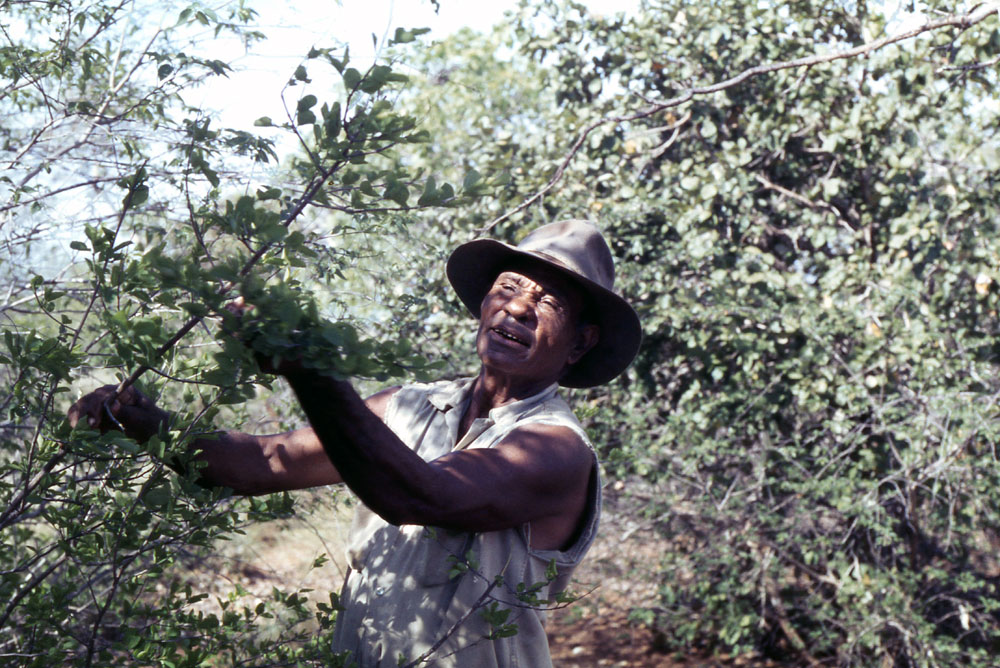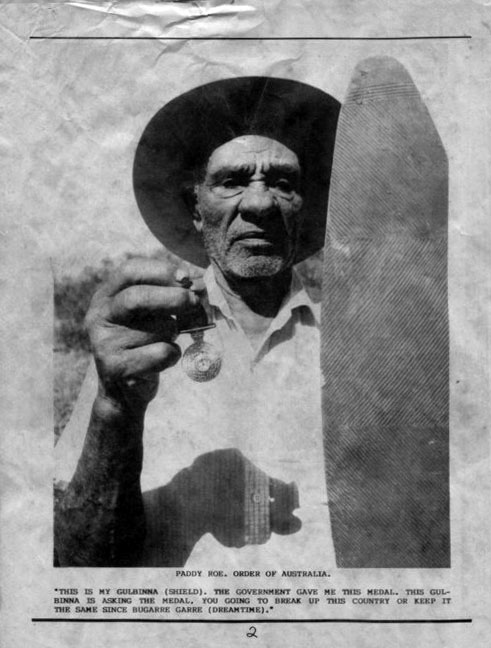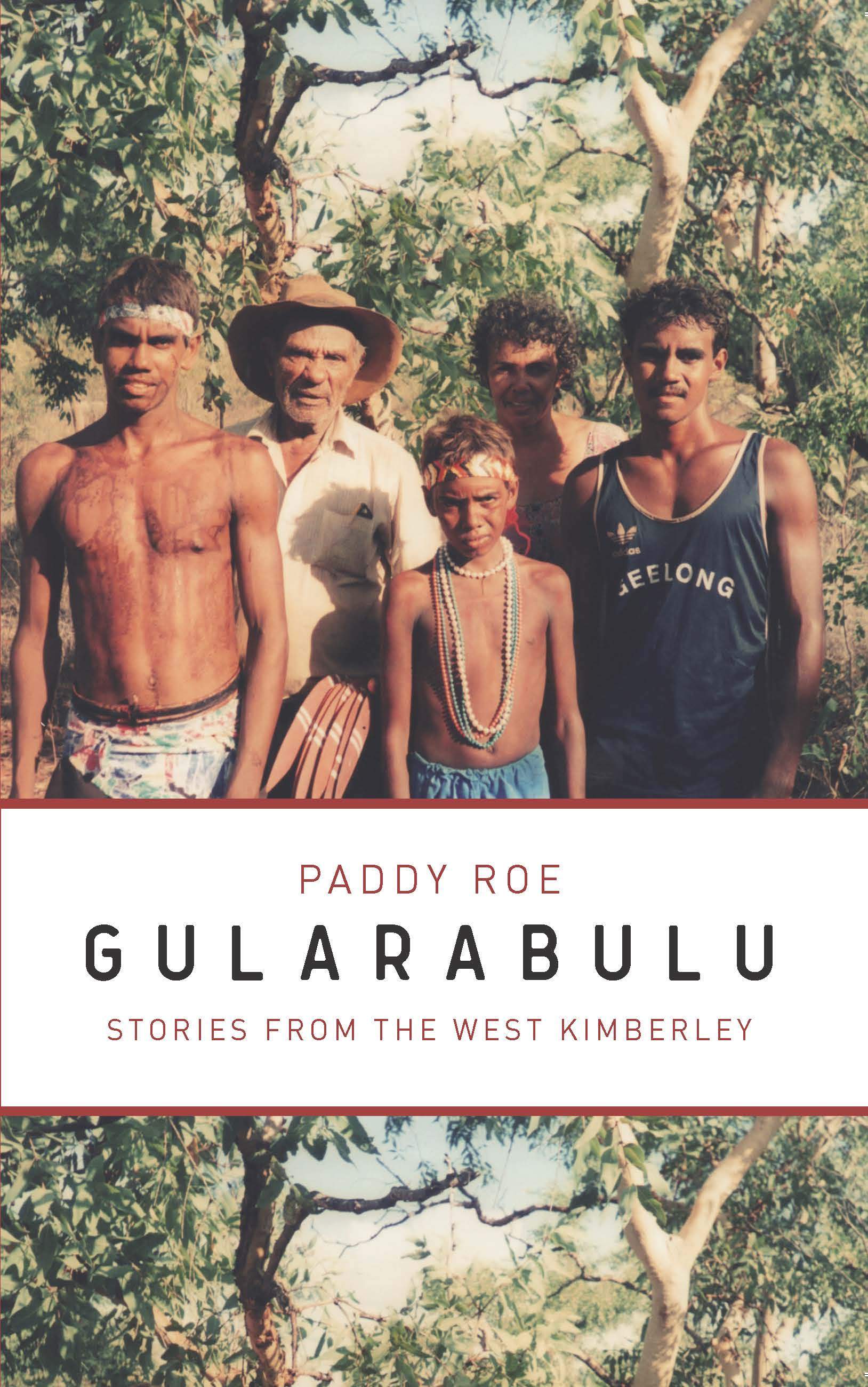The Garbina and the Order of Australia Medal
Goolarabooloo Foreign Policy: The Garbina and the Order of Australia Medal
Paddy Roe, celebrated Nyigina elder, used to hold his office under a Tamarind tree in Broome. He would sit cross-legged, crafting an artefact like a boomerang, and all sorts of people would come to consult with him, as he mediated between the desires of the settler colonial society to modernise the country and his own peoples’ dedication to maintaining the country as it is—or was—: ‘living country’ he would call it.

Image: Roger Garwood
From the 1960s until he became too old, he was a key figure in the protection and maintenance of Indigenous culture in Broome, what they call Goolarabooloo Culture as a way of designating a confederacy of ‘saltwater’ cultures extending from south of Broome up the Dampier peninsula. Peoples speaking the Karajarri, Yawuru, Jugun, Ngumbal, Nyul-nyul, Jabirr-Jabirr and Bardi languages were unified in their observance of a ceremonial dreaming track that had been laid out by ancestral heroes in the bugarrigarra. ‘We are all one,’ Paddy would say.
Since his day, things have changed a lot. His grandsons were involved in continuing his protective role when Woodside Energy, in conjunction with the Western Australian government under Colin Barnett, wanted to build a huge natural gas liquefying factory on the coast at Walmadany, smack in the middle of the dreaming track. A long and bitter campaign ensued, and the Goolarabooloo, now identified with the Roe family and a consortium of environmentalist groups, won a temporary reprieve when Woodside pulled out in 2013.
During the campaign to stop the gas plant, someone found this old photograph of Paddy Roe screwed up in a wastepaper bin—the Roe family now had enemies, people who wanted the gas plant to go ahead. It may have been the only copy in existence. It was retrieved and the image found its way onto T-shirts worn during the anti-gas protests.

In the image Paddy Roe puts two objects into dialogue, on the occasion when he was photographed after receiving his Order of Australia medal in 1990. He is shown holding the medal, like a little round shield itself, side-by-side with his own garbina, carved with the traditional parallel grooves, ramu, in the lightning-strike design for Goolarabooloo country, where the storms come in from the sea late in the season called laja, the build-up to the Wet. Perhaps he was wondering what the medal was really for, so he gets the garbina to ask it, as recorded by an unknown person at the time:
This is my gulbinna [sic] (shield). The government gave me this medal. This gulbinna is asking the medal, you going to break up the country or keep it the same as in bugarre garre [sic] (dreamtime).
He thus challenges the two objects to perform their protective role. Why protection? You can gaze at this composition for a moment and think back beyond when it was taken, to the history of the Broome area. The people of the Kimberley were subjected to successive waves of dispossession and terror since the late nineteenth century. Armed resistance was out of the question in open country, with only spears and boomerangs against guns. Protection came down to some kind of diplomacy; artful storytelling in Paddy Roe’s case as recorded in his books, Reading the Country (1984), and his first book, first published in 1983:

Artful diplomacy was Paddy Roe’s version of Goolarabooloo ‘foreign policy’, literally a strategy for survival. In the face of colonial violence one had to protect oneself and one’s community by thinking in terms of shields, and with persuasive figures of speech. The metaphoric role of the shield is confirmed when it is doubled up by the little medal-as-shield, and their relationship of diplomacy is made explicit through the dialogue. A shield has power; the garbina has a design that reproduces the ‘lightning’ power of the bugarrigarra, and so does the figure of speech, the metaphor that animates the garbina and gives it words addressed to the colonisers, but only obliquely, for Paddy Roe has thought to animate the objects and make them address each other like diplomats between the worlds of coloniser and colonised.
The cleverness of Roe’s composition draws observers into a sympathetic relationship with him, his people and their dreaming. That sympathy is the real protection. Even now, some decades later, it draws the viewer in again, to reflect upon history and the power of survival.
Stephen Muecke is Jury Chair of English Language and Literature in the School of Humanities at the University of Adelaide, South Australia. A recent book is The Mother’s Day Protest and Other Fictocritical Essays.

